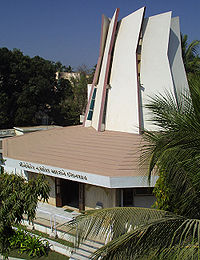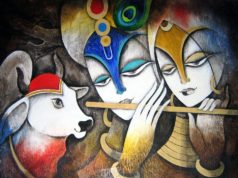Parsis are descendants from Persian immigrants of the A.D. 600-900 who fled from Persia, now Iran. They are the followers of the ancient Persian religion known as Zoroastrianism, living in India, Iran, and Pakistan.
Their ancestors fled from Persia in the 7th and 8th centuries to avoid persecution by Muslim invaders. They now number some 155,000, of whom some 90,000 live in and around Bombay; many Indian Parsis are engaged in business. Pakistani Parsis, some 5,200, live mainly in Karachi.
The Parsis divided into two sects in the 18th century over a calendar disagreement, and almost all present-day Parsis belong to either one of these sects. The religious and ethical literature of the Parsis is derived chiefly from the Avesta. Their priesthood is hereditary, and they regard fire as purifying and sacred. A fire is kept constantly burning in the main temples by priests, and prayers and sacrifices are offered before this fire on all festival days. In the past, to avoid defilement, the Parsis left their dead exposed on towers to vultures and other carrion-eating birds, but this practice is no longer widely followed.
Zoroaster & Religion
Zoroaster was the Persian religious leader, was born about 630 BC. Although raised in an age of polytheism, Zoroaster believed that a single good spirit, Ahura Mazda (“Lord Wisdom”) guided the world. He required “good thoughts of the mind, good deeds of the hand, and good words of the tongue” from his followers if they wished to enter paradise—which is a Persian word. Years later, Zoroaster’s followers posited the existence of a second, evil god called Angra Mainyu (“Fiendish Spirit”). Men and women must choose between these two gods, which represent good and evil. Today approximately 10,000 Zoroastrians live in Iran; others, called Parsis live in India.
Majority of the Parsis believe in God Ahura Mazda ‘Lord of Wisdom’ and worship in fire temples to symbolise Ahura Mazda, symbol of order and justice. The temples are closed to non believers. They have no specific days but pray five times every 24 hours at sunrise, noon, sunset, midnight and dawn. Religious activity becomes festive at the New Year and on the birthday of Zoraster. There is also a belief that Ahura Mazda’s Kingdom will come on Earth. They follow the sacred book called ‘Avesta’ the prayer book of Zoroastrianism. It forms the sacred books of the present-day Zoroastrians known as Parsis, who live in small communities in Iran and in India and Pakistan. The original home of these worshippers and of their holy scriptures was ancient Persia, and the faith they profess was that founded by the ancient Persian sage Zoroaster, one of the great religious teachers of the East. The doctrines of this ancient belief and a record of the customs of the earliest period of Persian history are preserved in the Avesta. The Avesta is in five parts, with at its centre the Gathas, hymns and songs thought to be the actual words of Zoroaster. These and other details on rites make up the Yasna, the chief liturgical document of Zoroastrianism. A similar and lesser part, the Visp-rat, includes tributes to great leaders of the sect. The Vendidad provides the basis for Zoroastrian law, and also includes a creation myth. The Khurda Avesta collects minor texts, hymns, and prayers. The Yashts are 21 hymns to angels and heroes.
Parsis have excelled in all spheres and gained a reputation for their leadership in Education and earned distinction in commerce, industry, arts, politics. Charity plays important role in the life of Pari community. In fact, Zoroaster, greek form of the name is the persian Prophet Zarathustra and his name means ‘He of the Golden Light’ Parsis believed ‘Good will eventually triump over Evil’.
UDVADA FIRE TEMPLE
A fire temple in Udvada – Surat Zoroastrian Fire Temple of Zoroastrians (Parsis). Udvada is a town in Gujarat, renowned for the Iranshah ?tash Bahr?m, the oldest and most famous of the Parsis. Subsequent to the fall of the Persian Sassanid Empire, many Zoroastrians fled to other regions in the hope of preserving their religious tradition.
NAGROL VILLAGE IN SURAT
A town of Silence built in 1767, Nagrol has more than a 100 houses owned by the fading Parsi Community. The town is set to become the first village in the country to host a Parsi Festival like the Tarnetar fair and kite festival. This historic village was developed by first generation immigrant Parsis who landed on the Arabian Sea coast in Valsad’s Umbergaon Taluka bordering Maharashtra about 1200 years ago.
When Parsis first landed on the port of Sanjan, they were awestruck by the beauty and serenity of the beach dotted with casurina trees on their way to the Kingdom of Jadi Rana. After the leader and high priest of Pari Community, Dastoor Dhaval convinced the King to accept them in his kingdom, Parsi immigrants set up base in Nagrol. Most of them got involved in Tadi (fermented juice from Palm tree) and fodder business.
Nagrol, developed by Parsis, has architectural marvels made some 600 years ago.
{jathumbnail off}









